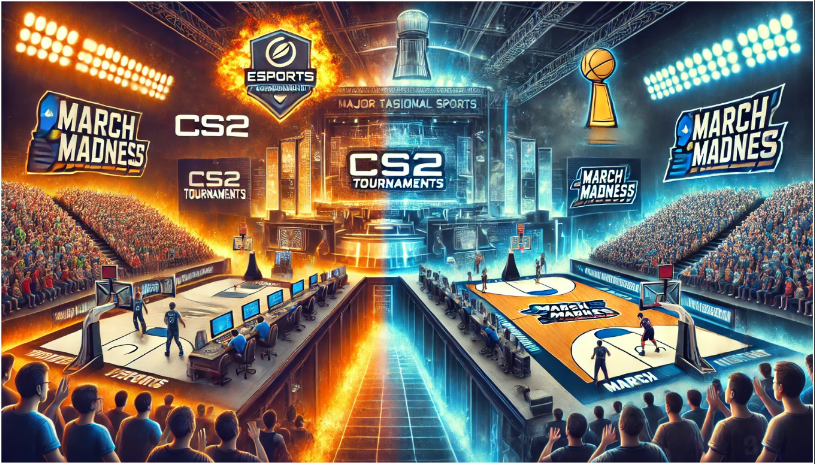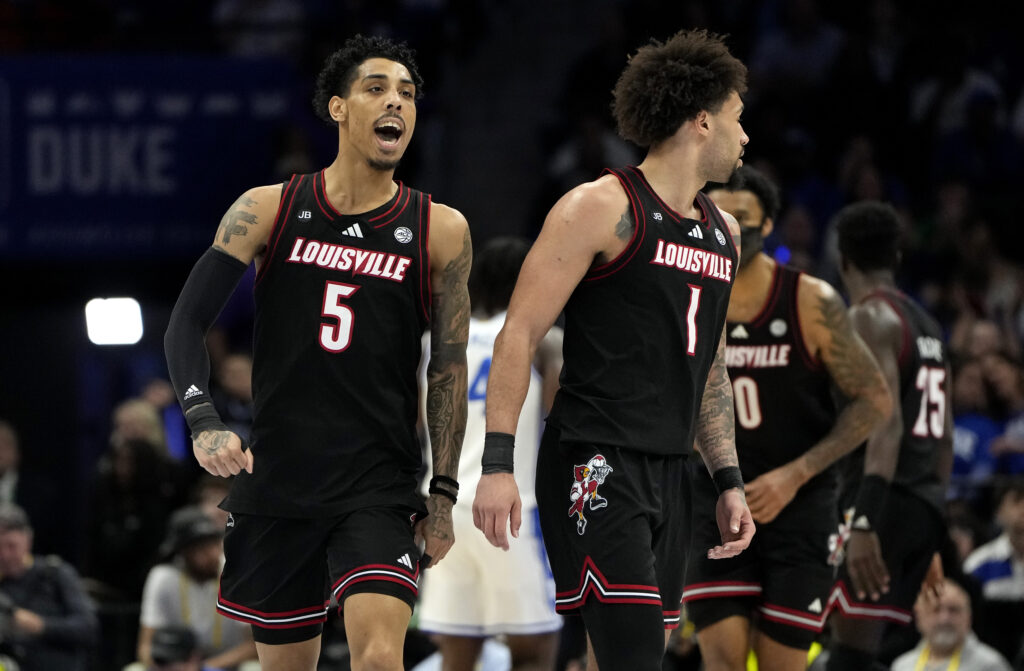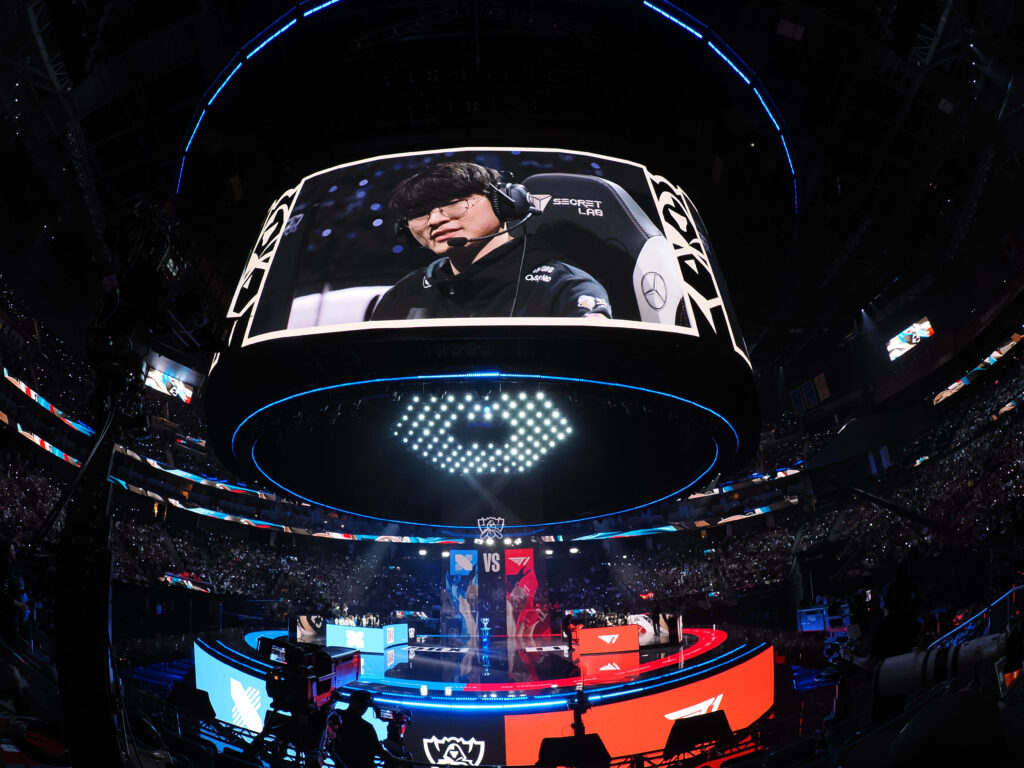CS2 Tournaments and March Madness: Comparing the Biggest Events in Esports and Traditional Sports
The ever-expanding world of Esports has attracted many enthusiasts of the gaming community as well as fans of the traditional sport. Today, we will review what has made CS2’s Esports stage what it is today and learn more about the key tournaments contributing to the growth!
Today, we will be taking a deep dive into the world of CS2 tournaments, so stay until the end!
Overview of March Madness
March Madness is one of the most well-known sporting events, all across the United States. The format and rules of the tournament are quite simple, but it still makes up for an exciting experience for the fans. An abundance of Americans visit the tournament annually to support their favorite teams and determine if their expectations will come true or not. Either way, the March Madness remains a well-known tournament, popular across all ages for the biggest icons in basketball.
With its high-intensity format and “Cinderella stories” of low-seeded teams ousting higher-ranked opponents, March Madness has become a cultural phenomenon. The last four games are held in enormous stadiums for a larger physical viewership.
CS2 Tournaments: The Pinnacle of Esports
The release of Counter-Strike has set an extremely high bar for any other FPS game to compete in depth, difficulty, and game mechanics. The game took the FPS Esports scene by a sport and is still, until today, one of the most popular competitive-edged shooters on the market.
Tournaments of CS2 are organized all around the world, with many leagues and formats that attract players and audiences alike. Just as traditional sports do, the tournaments of CS2 have “major” events that many consider to be the pinnacle of the game. These Majors are run by major companies and have millions of viewers worldwide, with growth consistently increasing.
Key CS2 Tournaments
The Majors
The most popular CS2 tournaments, however, are called Majors. Organized by Valve, the developer of Counter-Strike-it, it holds two Major Championships every year, each with a prize pool of at least $1 million. These Majors represent the pinnacle of Counter-Strike Esports, with teams from around the world competing for qualification to the few coveted spots in the event. In the same way, regional qualifiers charge teams with madness into the Majors, where only the very best and cream make it through.
ESL Pro League
The ESL Pro League is the perhaps longest-running and most well-known Counter-Strike league out there. It is divided into regional and seasonal stages, where the best teams from Europe, North America, South America, and Asia go up against each other. It all concludes with a final tournament where the winning team gains prestige and walks away with a fat prize pool share.
BLAST Premier
Another flagship tournament in CS2 is BLAST Premier, which boasts sleek production quality, a different approach to the format of tournaments, and a general emphasis on creating a premium viewing experience. Most top teams make appearances in BLAST tournaments, and it’s oriented toward an international audience.
Intel Extreme Masters-IEM
Organized by Intel, the IEM tournament series creates global teams composed of the best CS2 teams. Starting from Katowice in Poland up to Dallas in the U.S., IEM events span cities of the world, offering the widest platform for CS2 competition, rivaling the different teams in March Madness. IEM Katowice is amongst the most prestigious events within the calendar of Counter-Strike Esports, with a rich history to boot and a high prize pool.
Format: Single-Elimination vs. Double-Elimination
Another significant difference between the two tournaments is, well, the structure. March Madness is a single-elimination tournament, wherein every game is do-or-die. The format makes every match feel significant because teams get knocked out one after the other until only the champion remains. Contrast that with how many CS2 events, like the Majors, take on a double-elimination or Swiss-style format.
Audience Engagement
The audiences for the Major see both March Madness and the CS2 tournaments in somewhat different ways. March Madness is just a little different in its appeal, attracting fans from across the United States, especially college students, alumni, and ënthusiasists of the sport.
In contrast, CS2’s tournaments have more global audiences. It attracts fans worldwide who view or watch their favorite teams and players, with Twitch and YouTube being the main stages. We must also not miss out on one of the most important factors – Sponsors.
All of these events are primarily funded by sponsors of popular websites or trading platforms, contributing to the community’s growth and engagement. For example, platforms like Roobet, which often attract users with incentives such as the Roobet no deposit bonus code, play a key role in engaging fans. CS2 betting platforms typically have services such as case opening in CS2, skin roulette, and other types of skin-included gambling.
Prize Pools and Economic Impact
The economic stakes for both March Madness and CS2 tournaments are huge but wildly different. March Madness is a revenue juggernaut, generating upwards of $1 billion annually between television rights, ad revenue, and ticket sales. Huge money that also lines the coffers of the NCAA, even if the players don’t take a direct financial bite of that apple.
There are also loads of sponsorship deals that come along with live streaming and merchandise sales. Unlike March Madness, however, CS2 players and teams make money directly from tournament prize pools.
Fan Experience: In-Person vs. Online
In-person attendance plays a major role in the experience of March Madness. The arenas are packed with fans cheering for their teams, and the exciting atmosphere of college basketball makes the experience so exciting. The sound of the college bands, the sight of fan-painted faces, and a general sense of camaraderie among fans make March Madness one of the most memorable live experiences.
While some of the CS2 tournaments feature in-person audiences, to most fans, it’s an online experience. Streaming, of course, is a mainstay of Esports, and CS2 fans are no exception.
Esports vs. Traditional Sports: How Does it Compare?
If comparing CS2 tournaments to the likes of traditional sports events such as March Madness, the two competitions certainly have more in common than what meets the naked eye. For one, both feature an audience base that is well and truly passionate, with large economic stakes involved while also providing a stage for professional athletes to compete on. In traditional sports, you may encounter much more popular and crowd-known sports figures, than in the digital Esports scene for example.
However, interactivity takes Esports one step further from traditional sports: the live chat, direct audience feedback, and seamless global streaming create a more immersive experience. Classic sports possess another degree of engagement in terms of long-standing cultural ties, on-site excitement, and historic significance.
Conclusion
Ultimately, Esports and traditional sports achieve much of the same in that they serve to thrill fans with exciting moments of suspense and a reason to cheer for teams and players. The arenas and audiences will differ, but the competitive spirit celebrated by both March Madness and CS2 tournaments is one and the same that unites fans and athletes across the world.



